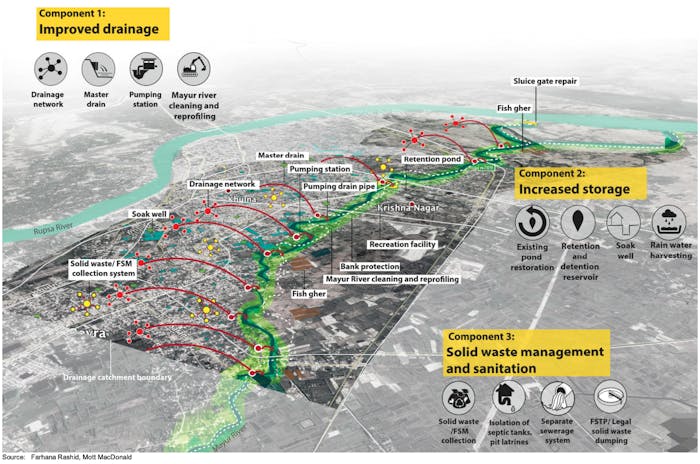Meet the Natural Drainage Solutions for Khulna City Team
Team lead, Euroconsult Mott MacDonald BV (EMM), has worked extensively in the coastal region of Bangladesh since the 1970s in rural and urban infrastructure development, river engineering, irrigation and drainage, water supply and wastewater, health and education, municipal capacity building, power and transportation. From 2014, EMM supported the preparation and, from October 2018, the implementation of the Bangladesh Delta Plan 2100. EMM’s projects are supported from its Bangladesh branch office. As part of the Mott MacDonald Group, EMM can also draw upon the global experience, networks and resources of its staff in 150 countries.
KUET-URP supports the project in the area of urban design and planning and contributes its detailed knowledge of Khulna’s institutions and urban issues. During the first phase of the project, KUET’s on-campus Design Studio enabled students and academic staff to engage and contribute solutions.
Created in partnership with: Khulna University for Engineering and Technology

 09 Industry, Innovation and Infrastructure
09 Industry, Innovation and Infrastructure
 11 Sustainable Cities and Communities
11 Sustainable Cities and Communities
 13 Climate Action
13 Climate Action
 14 Life Below Water
14 Life Below Water
 15 Life On Land
15 Life On Land
 06 Clean Water and Sanitation
06 Clean Water and Sanitation